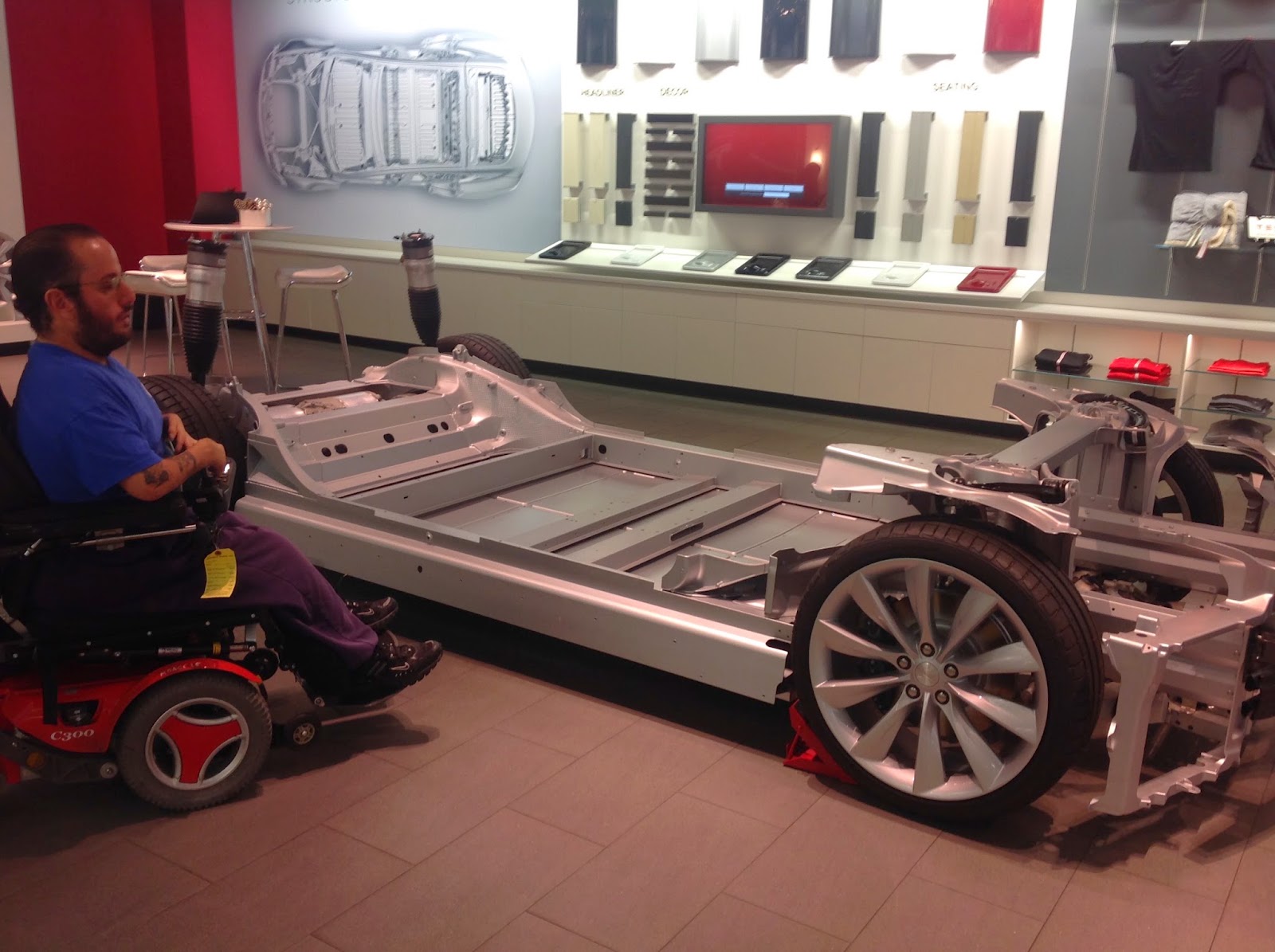We don't usually talk about beer and muscle cars on a forum that has to do with Tesla Motors. Actually, we do the opposite: we speak formally about the intuitive vehicles that will change our lives in the near future. We don't talk about "girls" and KISS concerts either; usually when we talk Tesla, we're talking straight business, as ours is not a concern with sex and glamour, but with transport and practicality.
But in the case of Tesla Motors, automation of vehicles, the literal integration between hardware and soft, is of key importance to the business itself. We're business people, so naturally, we don't want to get too silly, too "KISS-concertish" with this very idea of building automated vehicles. In other words, we're not trying to build loops-and-corkscrews for some big-ass, toy car to run around on.
And that's ironic to even say something like that, because back in the early-'90s when we were kids, we had Tyco and other slot car tracks long before we ever messed with "Crash Bandicoot." And let's face it: the beginnings of the video game era signified the end of Tonka trucks and mud pies.
Bitchin' technology? Yeah, it was and still is, but...we have to pay a little deeper attention to this whole idea of being "whimsical." What does that mean? Slot car racing could be considered "whimsical," but then look at the technology behind it.
I mean, it's easy for us as thinkers to take apart nearly any piece of technology and dissect its very running gear, but here's the point: slot cars only leave their lanes if they're driven too fast within too short of a timeframe, and when they are timed incorrectly.
But do they stay on track? Absolutely! Why, because they're on a track, which means that each vehicle is guided. But here's the other thing...slot car tracks use electromagnetic rails to drive/power their vehicles. This means that the tracks themselves are used to propel-and-guide the vehicle in question.
Can this same language be applied to our everyday mode of transit? Who knows; we've lived under the umbrella of bureaucracy for so long that we don't know any other way to do things!
Now...let's look at that same picture or vision, if you prefer, from a Socialist standpoint. First, Tesla platforms are intuitive, which means that it would not be too hard for the company to integrate their services into the overall grid, providing a whole new system of interstate travel. It would be one that consists of intuitive highways and freeway lanes, saving the grid money that would prove substantial in the long run.
So have we been "Socialist" in our approaches so far? We're still burning gas, still eating-up oil while the globe continues to rise in temperature...I think we need a new way!
Again, this does not mean take away business from the mainstream. Instead, why not use technology, our wealth and material resources, to integrate that very vision of intuitive, electromagnetic transport into the very heart of public transportation? The solution, you will find, is a simple one: build intuitive vehicles, something Tesla already has down, but then build intuitive corridors, giant "slot car tracks" for those vehicles/platforms to drive upon.
Bottom line: intuitive vehicles need smarter ways of getting around. If that means getting a little silly, then so be it!
 |
| This platform sketch gives a rough illustration of how "Smart" transit would/could work. |






























